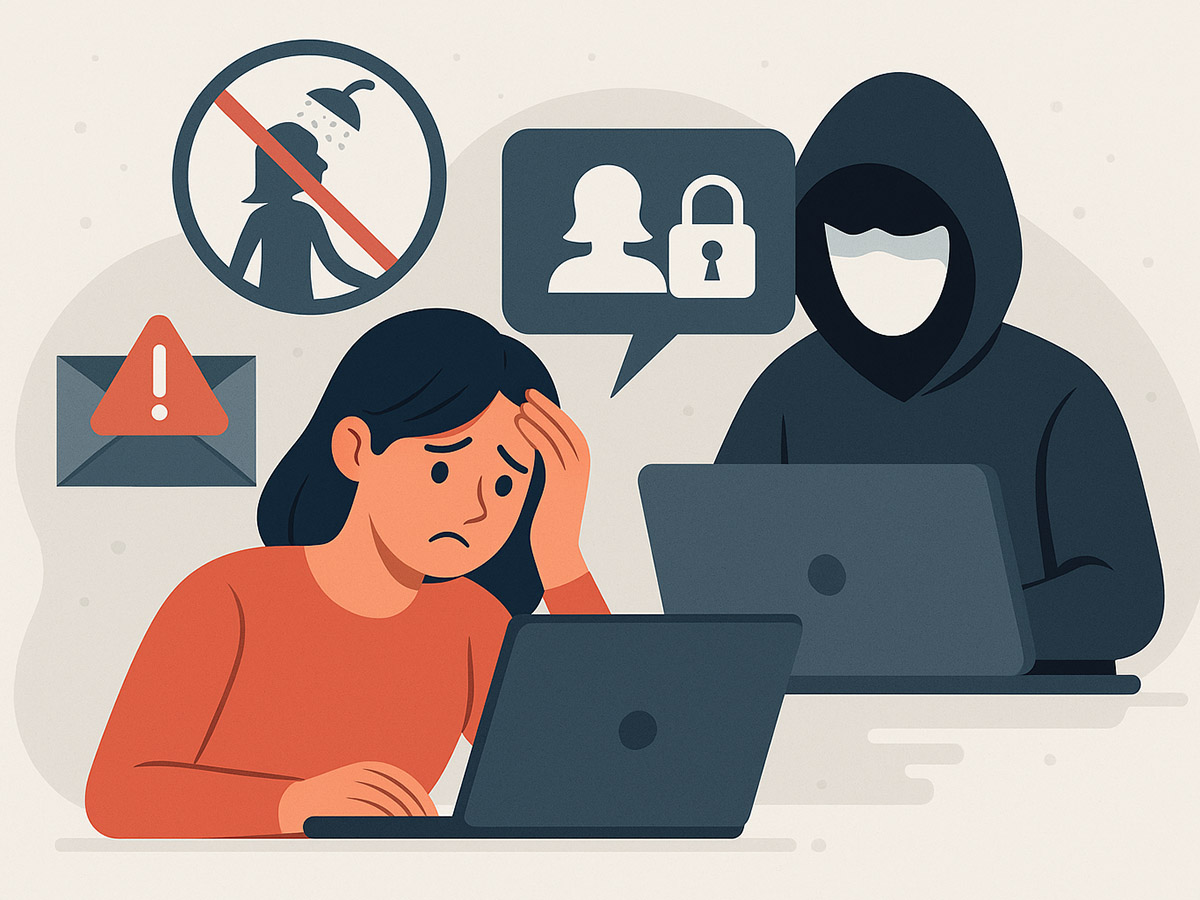


Sextortion is a form of image-based sexual abuse. A perpetrator persuades or tricks a person into sending nude or sexually explicit content (or uses manipulated content) and then threatens to expose it unless the person pays money, sends more images, performs sexual acts or undertakes other demands. A global survey found that 14.5% of adults reported being victims of sextortion and 4.8% admitted to perpetrating it (RMIT News, 2024). Among adolescents, one Australian study found that 11.3% of teens had experienced sextortion, often before the age of 16 (Wolbers, Cubitt, & Napier, 2025).
Psychologically, sextortion can be devastating. Victims describe feelings of humiliation, self-blame, hopelessness, fear of judgement and paranoia (Gassó, Klettke, Agustina, & Montiel, 2019). The relentless nature of the threats can trap people in cycles of anxiety. Qualitative research indicates that for many young adults, sextortion is a “central event” that alters how they perceive themselves and interact with others (Patricia Gassó et al., 2019). Emotional vulnerabilities, such as low self-esteem and body dissatisfaction, increase risk, particularly among adolescents with problematic internet use (Patricia Gassó et al., 2019). The psychological harm can shape identity, limit trust in relationships and alter future online behaviour.
Victims often experience acute physiological consequences. The threat of exposure, combined with shame and fear, activates the body’s stress response. Studies reveal short-term impacts such as anxiety, worry, somatic symptoms (headaches, nausea, insomnia) and long-term effects including depression (Murangira, 2025). From a biological perspective, chronic stress elevates cortisol, disrupts sleep, inhibits immune responses and increases the risk of long-term health problems. Sextortion therefore affects both mind and body.
On the social front, survivors often experience isolation and relational disruption. Fear of exposure may lead victims to withdraw from friends, family or social networks (Phys.org, 2022). Financially, sextortion can result in direct losses through ransom payments or indirect costs such as therapy, legal fees and job changes. In one analysis, sextortion spams involving cryptocurrencies generated at least US$1.3 million in a single year (Phys.org, 2022). Trust erosion, stigma, and under-reporting exacerbate the social consequences, with victims often reluctant to seek help due to fear of blame or rejection (Murangira, 2025).
Certain social and psychological factors increase vulnerability. Research indicates younger people, men (in financial sextortion cases), LGBTQ+ individuals and those with weaker digital literacy are disproportionately affected (RMIT News, 2024). Personality traits such as attachment-related anxiety and sexual need can increase risk, whereas higher conscientiousness and emotional stability are protective (Huddersfield University, 2024). Prevention therefore requires not only digital skills but also education, self-esteem support and strong social networks.
Effective protection spans biological, psychological and social strategies:
Sextortion is not just an internet crime—it is a multi-dimensional threat affecting body, mind and relationships. Recognising the impacts is crucial for meaningful prevention and recovery. Victims are not to blame; they are responding to someone else’s exploitation. By educating ourselves, supporting victims and fostering resilient digital habits, we can reduce harm and restore a sense of safety in the digital age.
Gassó, P., Klettke, B., Agustina, J. A., & Montiel, I. (2019). Sexting, mental health, and victimisation among adolescents: A literature review. International Journal of Environmental Research and Public Health, 16(13), 2364. https://doi.org/10.3390/ijerph16132364
Huddersfield University. (2024). Psychological factors leading to sextortion: The role of personality, emotional factors and sexual needs in victimisation. University of Huddersfield Research Portal. https://pure.hud.ac.uk/en/publications/psychological-factors-leading-to-sextortion-the-role-of-personali
Murangira, B. T. (2025). Cyber sextortion: An emerging threat to netizens. Library Progress International, 45(2). https://www.bpasjournals.com/library-science/index.php/journal/article/view/4348
Phys.org. (2022, January 5). Sextortion leads to financial losses and psychological trauma: What to look out for on dating apps. https://phys.org/news/2022-01-sextortion-financial-losses-psychological-trauma.html
RMIT News. (2024, June 11). One in seven adults have experienced someone threaten to share their intimate images: Research. RMIT University. https://www.rmit.edu.au/news/all-news/2024/june/sextortion
Wolbers, H., Cubitt, T., & Napier, S. (2025). The impacts of sexual extortion on minors: A systematic review. Trends & Issues in Crime and Criminal Justice, 710. Australian Institute of Criminology. https://www.aic.gov.au/publications/tandi/tandi710
Should you find any content in these articles in any way distressing, please seek support via New Zealand telehealth services.
Seek Help